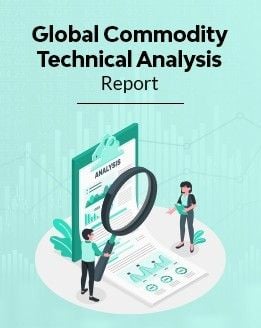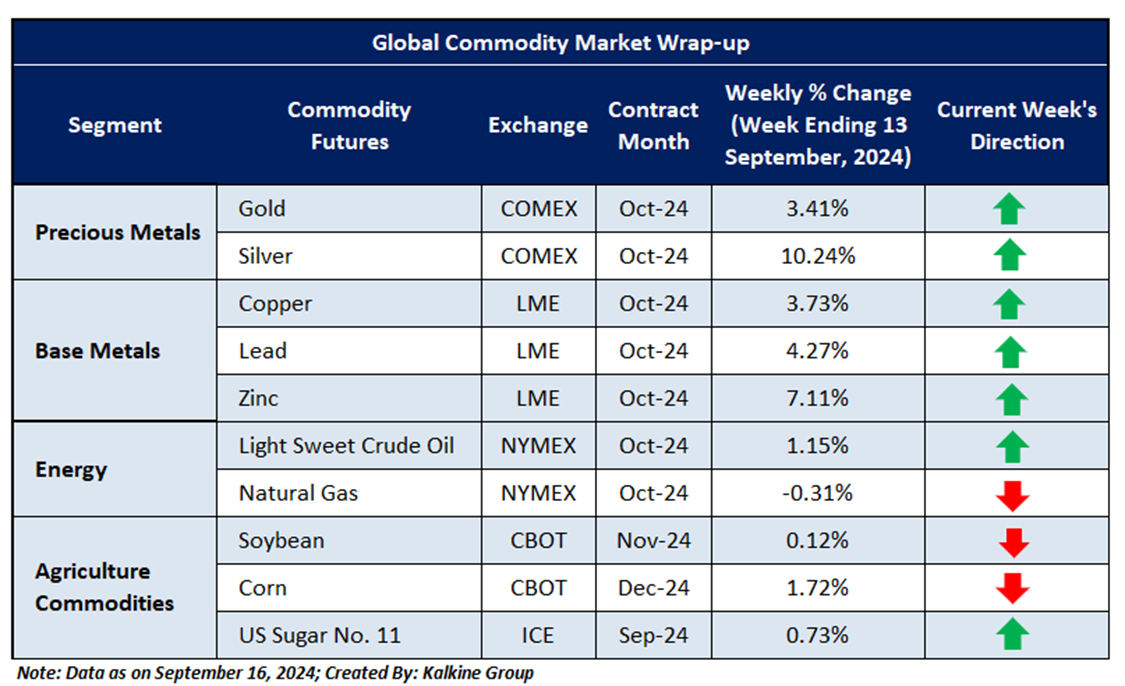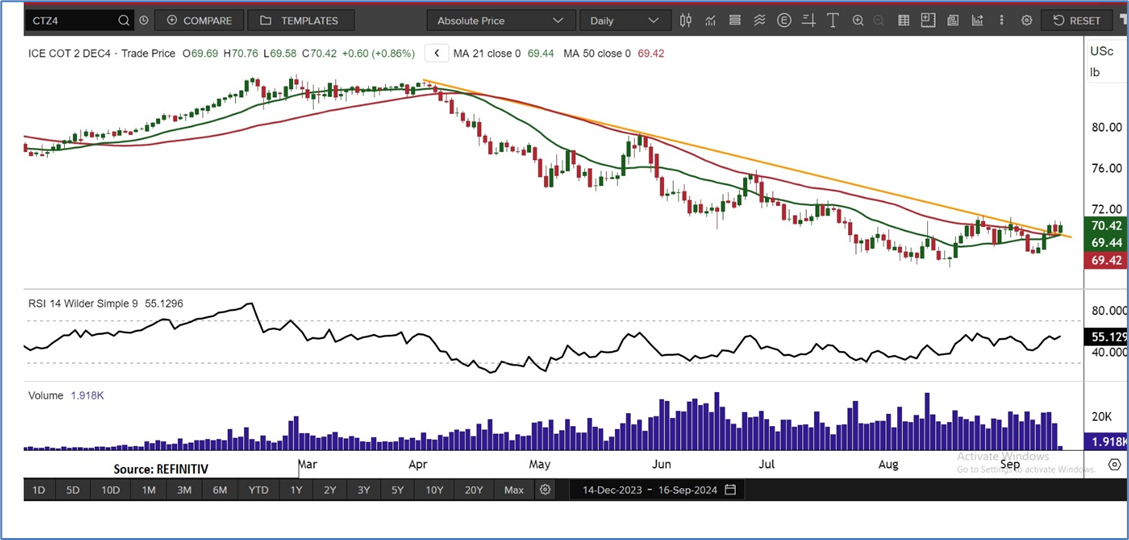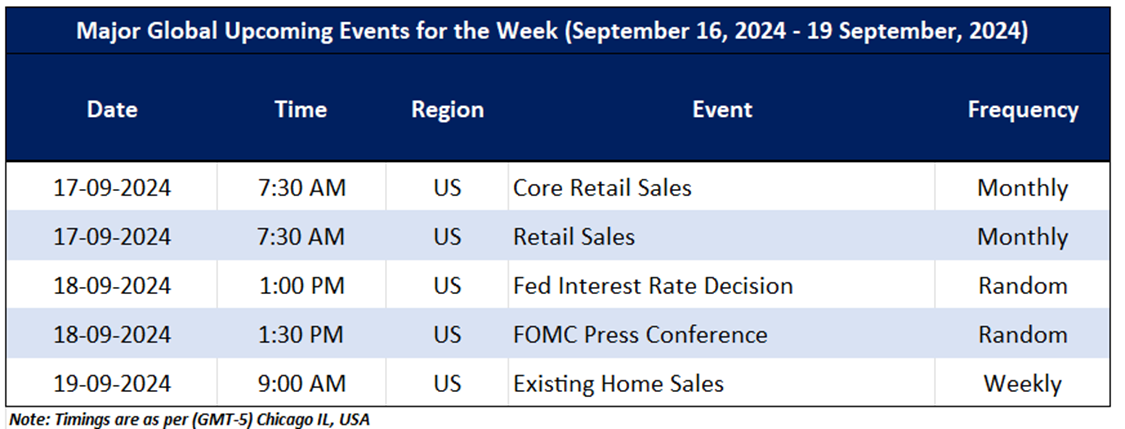
Global Commodity Market Wrap-Up
Last week, the metals market demonstrated strong gains. Gold increased by 3.41%, showing notable resilience, while silver surged by 10.24%. Base metals also performed well, with copper rising 3.73%, zinc climbing 7.11%, and lead advancing 4.27%. This marked contrast to the prior week’s stability underscores a shift toward more bullish market sentiment.
Last week, natural gas prices dropped by 0.31%, reflecting a shift in market sentiment that may be due to changes in supply dynamics or seasonal demand. Conversely, crude oil prices rose by 1.15%, suggesting robust market confidence. In the agricultural sector, U.S. sugar prices increased by 0.73%, adding to the mixed performance observed across various commodities.

Global commodity markets are showing a mixed outlook. Despite rebounds from lower levels, key support levels are holding, indicating persistent bullish sentiment. Precious metals are surging after recent lows, while natural gas remains steady following its recovery. Conversely, crude oil is exhibiting weakness, dropping below its support level. Agricultural commodities, on the other hand, are trending within a range, bound by support levels and influenced by broader market fluctuations.
The upcoming Micro and Macroeconomic events that may impact market sentiments include an update on the S&P Global Core Retail Sales, Retail Sales, Fed Interest Rate Decision, FOMC Press Conference, Existing Home Sales.
Having understood the global commodities performance over the past week, taking cues from major global economic events, and based on technical analysis, noted below is the recommendation with the generic insights, entry price, target prices, and stop-loss for US Cotton No. 2 December Future (ICE: CTZ4) for the next 2-4 weeks duration:

US Cotton No. 2 December Future (ICE: CTZ4)
Price Action and Technical Indicator Analysis:
Cotton futures are showing signs of bullish potential as October prices maintain positions above key support levels. The daily chart reveals a consolidation phase near this support zone, accompanied by a bullish candlestick pattern, suggesting a possible reversal from recent lows. The Relative Strength Index (RSI) stands at 42.29, indicating potential upward momentum as it recovers from the oversold territory. Although prices are still below the 50-period Simple Moving Average (SMA), which serves as resistance, they are trading above the 21-period SMA, which provides support. This technical setup presents a cautiously optimistic outlook for cotton futures.
Now the next crucial resistance levels appear to be at USc 76.00 and USc 77.00, and prices may test these levels in the coming sessions (2-4 weeks).


As per the above-mentioned price action and technical indicators analysis, US Cotton No. 2 December Future (ICE: CTZ4) is looking technically well-placed for a ‘Buy’ rating. Investment decisions should be made depending on an individual’s appetite for downside potential, risks, and any previous holdings. This recommendation is purely based on technical analysis, and fundamental analysis has not been considered in this report. Technical summary of the ‘Buy’ recommendation is as follows:

Upcoming Major Global Economic Events
Market events occur on a day-to-day basis depending on the frequency of the data and generally include an update on employment, inflation, GDP, WASDE report, consumer sentiments, etc. Noted below are the upcoming week's major global economic events that could impact the commodities prices:

Futures Contract Specifications

Disclaimers
Related Risks: Based on the technical analysis, the risks are defined as per risk-reward ratio (~0.80:1.00), however, returns are generated within a 2-4 weeks’ time frame. This may be looked at by Individuals with sufficient risk appetite looking for returns within short investment duration. The investment recommendations provided in this report are solely based on technical parameters, and the fundamental performance of the commodities has not been considered in the decision-making process. Other factors which could impact commodity prices include market risks, regulatory risks, interest rates risk, currency risks, and social and political instability risks etc.

Note 1: Past performance is not a reliable indicator of future performance.
Note 2: Individuals can consider exiting from the commodity if the Target Price mentioned as per the Technical Analysis has been achieved and subject to the factors discussed above.
Note 3: How to Read the Charts?
The Green colour line reflects the 21-period moving average while the red line indicates the 50- period moving average. SMA helps to identify existing price trend. If the prices are trading above the 21-period and 50-period moving average, then it shows prices are currently trading in a bullish trend.
The Black colour line in the chart’s lower segment reflects the Relative Strength Index (14-Period) which indicates price momentum and signals momentum in trend. A reading of 70 or above suggests overbought status while a reading of 30 or below suggests an oversold status.
The Blue colour bars in the chart’s lower segment show the volume of the commodity. Commodity with high volumes is more liquid compared to the lesser ones. Liquidity in commodity helps in easier and faster execution of the order.
The Orange colour lines are the trend lines drawn by connecting two or more price points and used for trend identification purposes. The trend line also acts as a line of support and resistance.
Technical Indicators Defined: -
Support: A level at which the stock prices tend to find support if they are falling, and a downtrend may take a pause backed by demand or buying interest. Support 1 refers to the nearby support level for the stock and if the price breaches the level, then Support 2 may act as the crucial support level for the stock.
Resistance: A level at which the stock prices tend to find resistance when they are rising, and an uptrend may take a pause due to profit booking or selling interest. Resistance 1 refers to the nearby resistance level for the stock and if the price surpasses the level, then Resistance 2 may act as the crucial resistance level for the stock.
Stop-loss: It is a level to protect further losses in case of unfavourable movement in the stock prices.
Risk Reward Ratio: The risk reward ratio is the difference between an entry point to a stop loss and profit level. This report is based on ~80% Stop Loss of the Target 1 from the entry point.
The reference date for all price data, volumes, technical indicators, support, and resistance levels is September 16, 2024 (Chicago, IL, USA 01:30 AM (GMT-5). The reference data in this report has been partly sourced from REFINITIV.
Note: Trading decisions require a thorough analysis by individuals. Technical reports, in general, chart out metrics that may be assessed by individuals before any commodity evaluation. The above are illustrative analytical factors used for evaluating the commodity; other parameters can be looked at along with additional risks per se.
The advice given by Kalkine Canada Advisory Services Inc. and provided on this website is general information only and it does not take into account your investment objectives, financial situation and the particular needs of any particular person. You should therefore consider whether the advice is appropriate to your investment objectives, financial situation and needs before acting upon it. You should seek advice from a financial adviser, stockbroker or other professional (including taxation and legal advice) as necessary before acting on any advice. Not all investments are appropriate for all people. The website www.kalkine.ca is published by Kalkine Canada Advisory Services Inc. The link to our Terms & Conditions has been provided please go through them. On the date of publishing this report (mentioned on the website), employees and/or associates of Kalkine do not hold positions in any of the stocks covered on the website. These stocks can change any time and readers of the reports should not consider these stocks as advice or recommendations later.